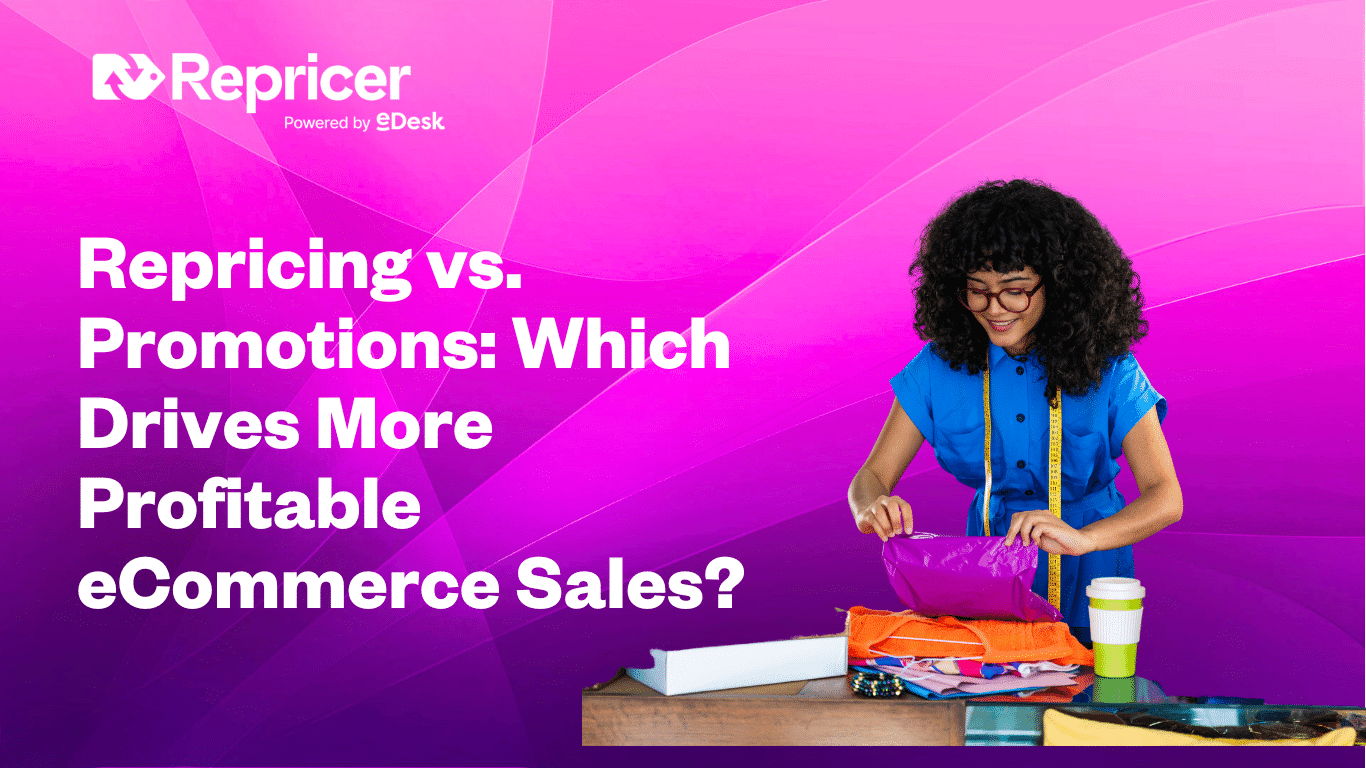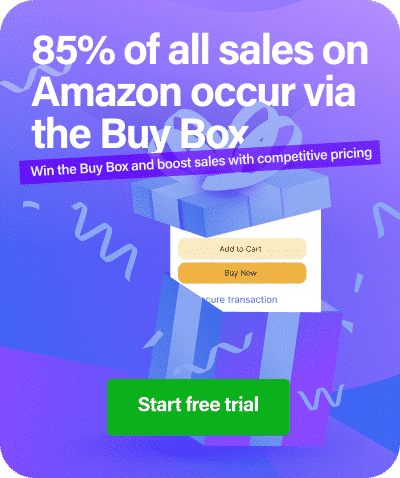Picture this: You’re an eCommerce manager watching your competitors slash prices left and right, while your sales numbers start to dip. Do you respond with flash sales and discount codes, or do you implement a more sophisticated pricing strategy? This decision could make or break your profit margins.
In today’s hyper-competitive eCommerce landscape, pricing strategies have become increasingly crucial for businesses looking to stay ahead of the competition. Two primary approaches dominate the field: dynamic repricing and promotional discounts. But which one actually drives more profitable sales? Let’s dive deep into this strategic decision that could transform your bottom line.
Understanding the Two Approaches
What is Dynamic Repricing?
Dynamic pricing involves adjusting product prices in real-time based on various factors, such as demand and competitor pricing. Unlike static pricing models, repricing software continuously monitors market conditions and automatically adjusts your prices to maintain competitiveness while protecting your profit margins.
Modern repricer software vs sale pricing strategies operate on sophisticated algorithms that consider multiple data points: competitor prices, inventory levels, sales velocity, and market demand. According to Insider, Amazon changes the prices of its products approximately 2.5 million times a day, demonstrating the scale and speed at which dynamic pricing operates.
What are Manual Promotions?
Traditional promotions involve offering temporary discounts, coupon codes, flash sales, or special deals to stimulate demand. According to a 2024 survey, nearly 70% of consumers would buy from a competitor if it offered lower prices. These promotional tactics create urgency and appeal to price-sensitive customers but often come at the cost of reduced profit margins.
The Speed Factor: Automation vs Manual Processes
The most significant difference between automated pricing vs manual discounts lies in response time. While you’re manually planning your next promotion, your competitors using repricing software are already adjusting prices multiple times per day.
Dynamic pricing gives you immediate control over your prices. Instead of watching and waiting to see if your products and services are priced effectively, you can use price optimization software to change prices within minutes, with near-instantaneous results.
This speed advantage becomes crucial during high-demand periods, competitor stockouts, or sudden market shifts. Manual promotional campaigns typically require days or weeks of planning, approval processes, and implementation time.
Profit Margin Protection: The Critical Difference
How Repricing Protects Your Bottom Line
One of the strongest arguments for dynamic pricing vs discounts is profit margin protection. Repricing tools let you set minimum prices, maximum prices, and even desired profit margins so that you’ll never sacrifice too much profit just to make a sale.
Advanced repricing strategies include:
- Net margin repricing that ensures you never sell below profitable thresholds
- Competitive positioning without race-to-the-bottom pricing
- Automatic price increases when competitors go out of stock
- Sales velocity-based adjustments to optimize inventory turnover
The Promotional Pricing Trap
While promotions can drive immediate sales volume, they often erode your perceived value pricing. Poorly timed promotional pricing strategies can erode customer loyalty among shoppers who bought your products at full price only to see a promotional price after they made their purchases.
Studies show that frequent discounting can train customers to wait for sales, ultimately reducing your full-price sales and creating a dependency on promotional pricing to maintain volume.
Buy Box Impact: Where Repricing Shines
For marketplace sellers, particularly on Amazon, the Buy Box is everything. 83% of all Amazon sales happen through the Buy Box, making it the ultimate prize for sellers.
A competitive price is one key aspect of winning the Featured Offer. Repricing software ensures that your products remain competitive and visible to buyers, increasing the likelihood of winning the Featured Offer.
Win the Buy Box with Intelligent Pricing
Repricing strategies that focus on Buy Box optimization include:
- Real-time competitor monitoring and price matching
- Strategic positioning slightly below competitors when profitable
- Automatic adjustments when competition changes
- Inventory-based pricing modifications
Repricer features like Buy Box optimizers can even increase your prices incrementally when you’re already winning the Buy Box, maximizing profit margins without losing position.
When Each Strategy Works Best
Scenarios Favoring Dynamic Repricing
High-Competition Markets: When you’re competing against numerous sellers for the same products, repricing software provides the agility needed to maintain competitive positioning.
Inventory Management: Automated pricing helps clear slow-moving inventory by gradually reducing prices or increase prices on low-stock items to manage demand.
Market Volatility: During periods of rapid price changes or seasonal fluctuations, automated systems can react faster than manual processes.
Profit Optimization: When maintaining healthy margins is crucial, repricing software provides the precision control needed.
When Promotions Make Sense
Brand Awareness: New product launches or brand introduction campaigns benefit from promotional visibility.
Seasonal Clearance: End-of-season inventory clearing often requires deeper discounts than competitive repricing would provide.
Customer Acquisition: Attracting new customers with introductory offers can be valuable for building long-term relationships.
Bundle Sales: Creating package deals and cross-selling opportunities often works better with promotional structures.
The Data Speaks: Performance Comparison
Pricing trends in 2024 is all about AI-powered pricing strategies as they continue to become more sophisticated. By leveraging advanced software and algorithms, eCommerce retailers can streamline their pricing processes, freeing up valuable time and resources to focus on strategic initiatives.
Recent case studies show that businesses implementing dynamic pricing see:
- 5-15% improvement in profit margins
- 20-30% reduction in pricing management time
- Improved inventory turnover rates
- More consistent Buy Box wins
Meanwhile, promotional-heavy strategies often result in:
- 10-25% margin erosion during promotional periods
- Customer behavior shifts toward discount dependency
- Reduced perceived product value
- Inconsistent sales patterns
Coupon Strategy vs Intelligent Repricing
While coupon strategy has its place in marketing, intelligent repricing offers more sustainable growth. Dynamic promotions focus on boosting conversions through targeted offers that maintain consistent product pricing, enhancing the customer shopping experience.
The key difference is that repricing maintains your base price integrity while staying competitive, whereas frequent promotions can devalue your brand in customers’ minds.
Sales Lift Analysis: Measuring True Impact
When conducting sales lift analysis, consider these metrics:
For Repricing:
- Profit margin improvement
- Buy Box win rate
- Price competitiveness index
- Inventory turnover optimization
For Promotions:
- Short-term volume increase
- Customer acquisition cost
- Long-term customer value impact
- Brand perception changes
Making the Strategic Choice
The choice between repricing vs promotions isn’t necessarily either/or. The most successful eCommerce operations use a hybrid approach, leveraging repricing software for day-to-day competitive positioning while using strategic promotions for specific business objectives.
However, if forced to choose one primary strategy, repricing offers several advantages:
Sustainability: Automated pricing creates sustainable competitive advantages without eroding brand value.
Scalability: As your product catalog grows, repricing software scales with you, while manual promotions become increasingly complex to manage.
Profitability: Built-in margin protection ensures you’re building a sustainable business, not just driving volume.
The Technology Advantage
Modern eCommerce pricing tactics comparison reveals that businesses using automated repricing systems consistently outperform those relying primarily on manual promotional strategies. The technology allows for:
- Real-time market response
- Data-driven decision making
- Reduced human error
- Consistent application of pricing rules
- Advanced analytics and reporting
Implementation Best Practices
For Repricing Software
- Set clear minimum margin thresholds
- Define competitive positioning rules
- Monitor performance metrics regularly
- Adjust strategies based on market feedback
For Promotional Campaigns
- Use strategically, not as a primary pricing strategy
- Target specific customer segments
- Measure long-term impact on brand perception
- Coordinate with broader marketing objectives
Looking Ahead: The Future of eCommerce Pricing
To counter the problem, 72% of retailers plan to raise their prices within the next six months. This inflationary pressure makes sophisticated pricing strategies even more critical.
The businesses that will thrive are those that can maximize Amazon profits through intelligent pricing rather than racing to the bottom with constant promotions.
Key Takeaways
Bottom Line: While promotions have their place in eCommerce strategy, dynamic repricing offers a more sustainable path to profitable growth. The ability to maintain competitive pricing while protecting margins, respond instantly to market changes, and win the Buy Box consistently makes repricing the superior choice for long-term success.
For eCommerce managers facing this strategic decision, consider repricing software as your primary pricing strategy, with targeted promotions serving specific tactical objectives. The combination of speed, precision, and profit protection that modern repricing tools provide creates a significant competitive advantage that manual promotional strategies simply cannot match.
The question isn’t whether you can afford to implement dynamic repricing – it’s whether you can afford not to in today’s competitive marketplace.





